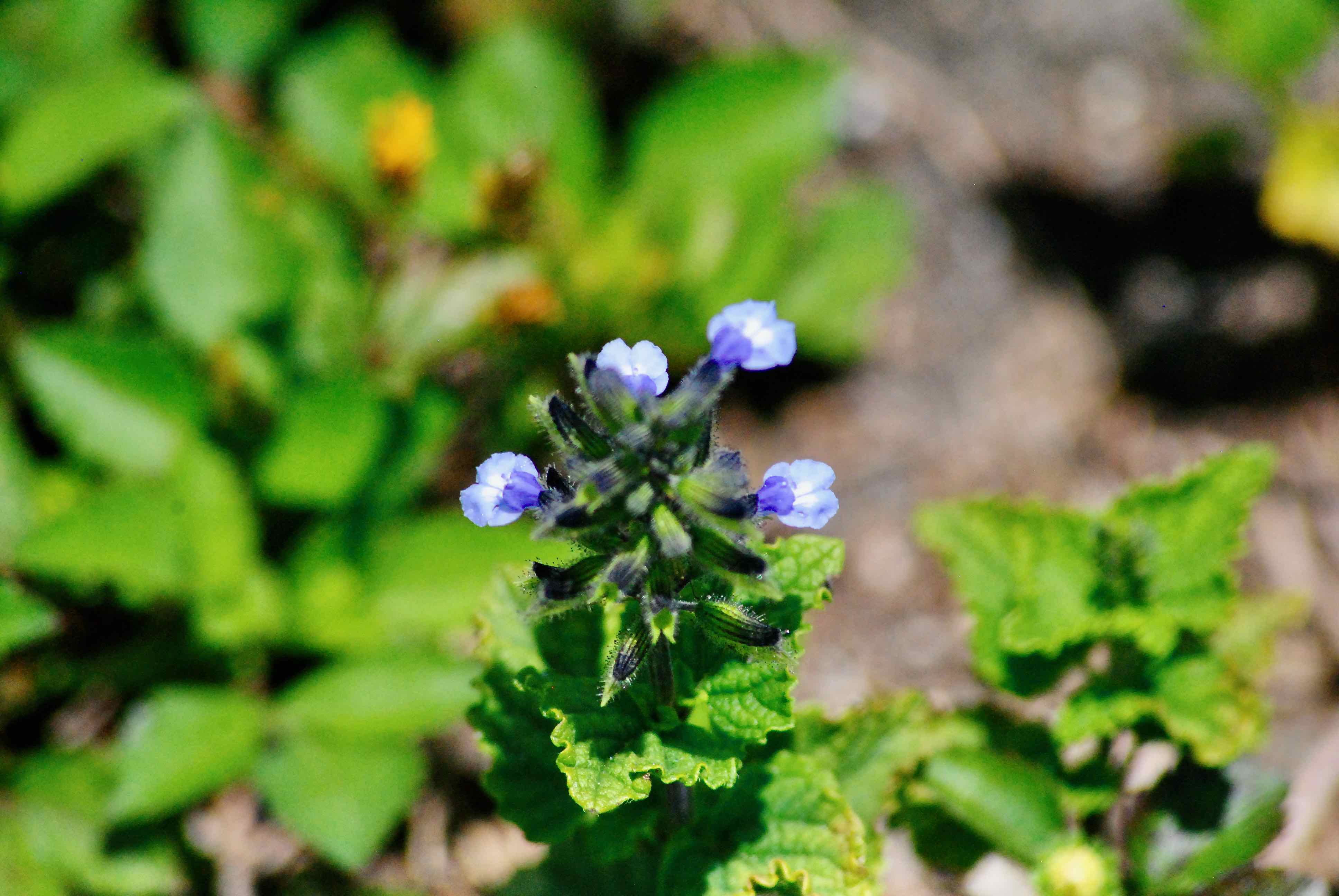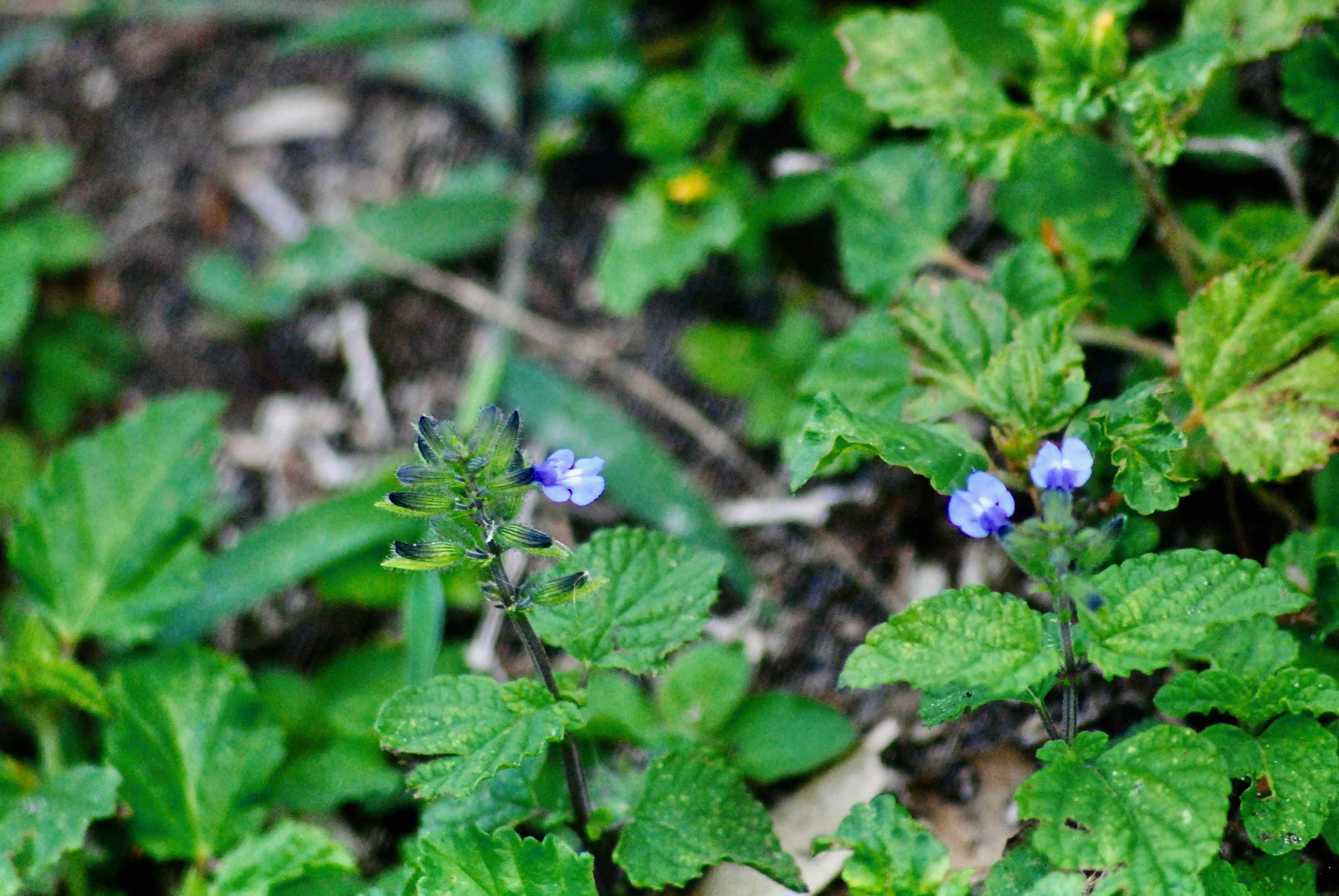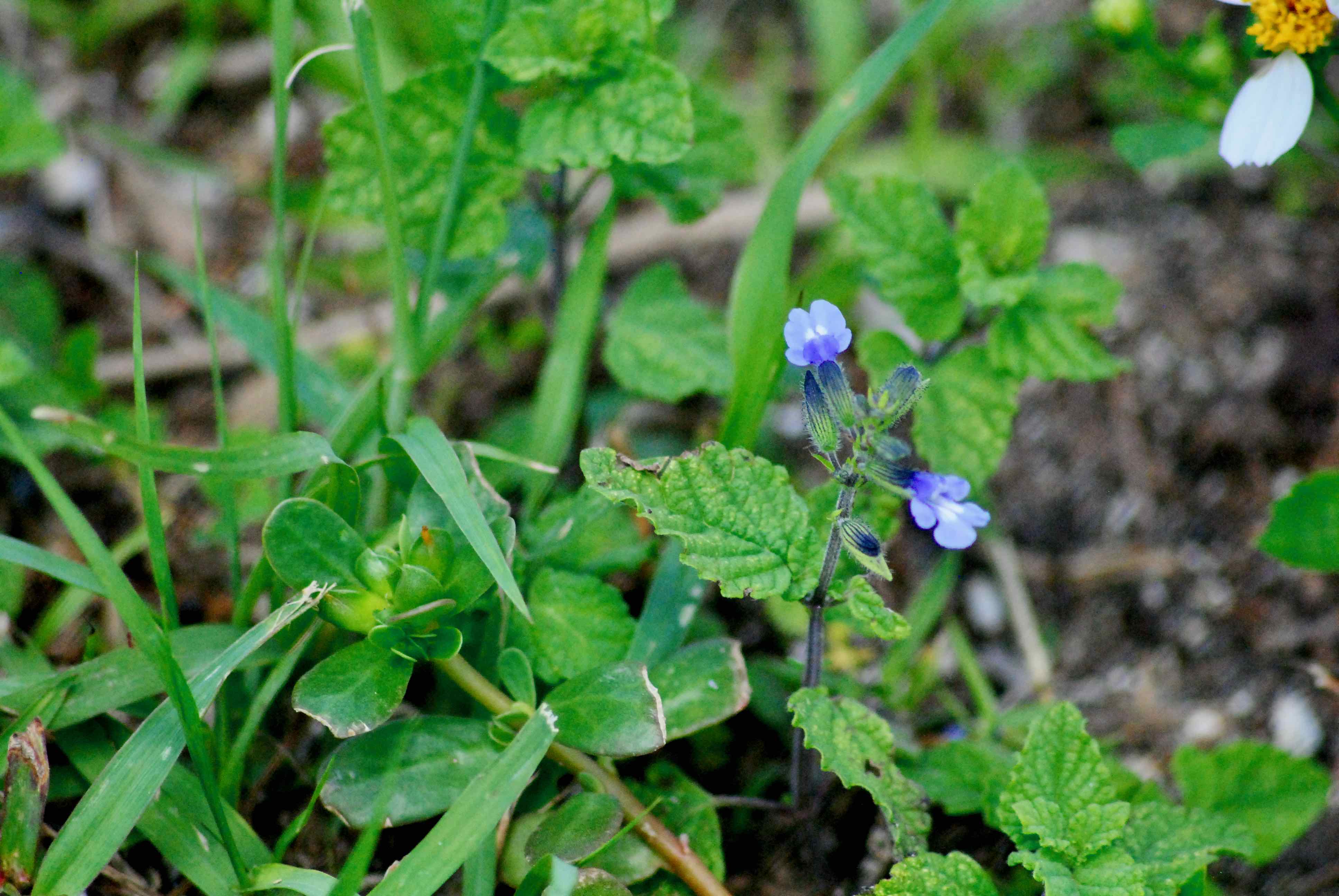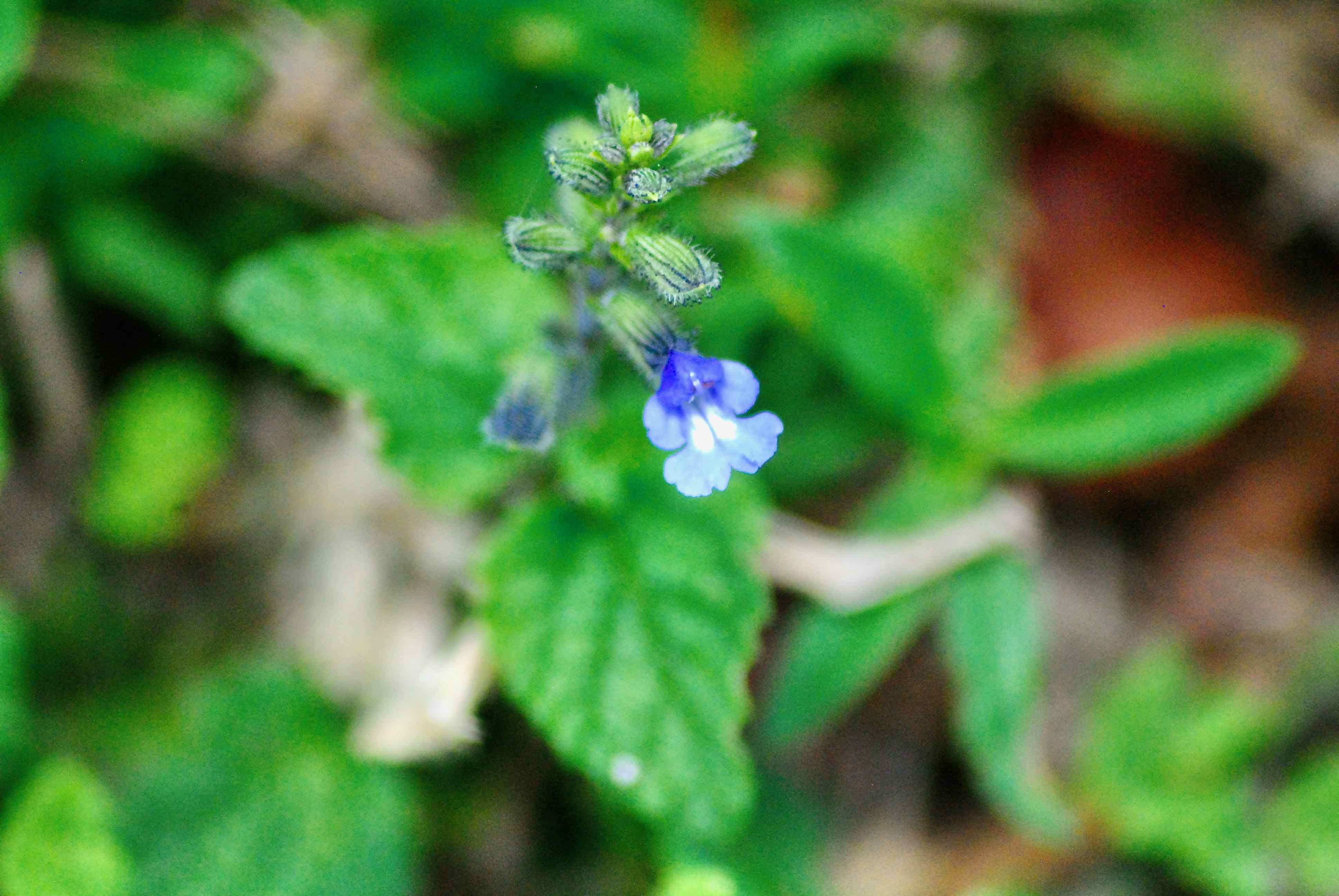
West Indian sage, photographed at Frances S. Taylor Everglades Wildlife Management Area, western Broward County, in May 2014.
West Indian Sage, Salvia occidentalis, is a member of the mint family, Lamaiceae, and according the Institute for Regional Conservation, a Florida native. So it got us to thinking, how about using it to concoct a julip to sip when the Florida Derby rolls around?
Not likely, from what we've read. The mint family is full of fragrant and tasty plants — basil, sage, majoram and of course mint itself, to name a few — but West Indian sage apparently isn't one of them. In fact, the plant is described has having a "strong and disagreeable" odor to it.
West Indian sage is found only in Florida and Hawaii among the 50 states. It's a rare plant, mostly found in South Florida in disturbed areas — roadsides, fallow fields, etc., and occassionally on the edges of hammocks. It prefers sandy soils but will adapt to others. It can be either an annual or perennial. It's also found in parts of the Caribbean, including Puerto Rico and the U.S. Virgin Islands, Mexico, Central America and South America. While both the IRC and the Atlas of Florida Vascular Plants list West Indian sage as a Florida native, the U.S. Department of Agriculture says it is a non-native. The Invasive Species Compendium considers it an invasive in South Florida, though that seems like an overstatement. Again, so much for the Florida Derby.
It is a low-growing plant that might top out at half a foot tall. It sends up a short spike of small, blue-white flowers. They're quite pretty in their own right, but easily overlooked because of their size. The leaves are "textured" sort of like mint, and coarsely toothed, more rounded than sharp along the edges. It is a nectar source for butterflies.
Blooming season is spring into the fall, eventually producing a small nutlet as its fruit. West Indian sage tolerates drought, grows in a range of moist, well-drained soils and takes full sun to light shade.
The Guna of Panama and Colombia use the leaves of West Indian sage to relieve back pain. Other people use it to relieve toothache. It's also been commonly used to treat dysentery and stomach problems. West Indian sage is used as a ground cover, in fact, on the Island of Java in Indonesia, it's been put through a trial as a cover crop. The downside to using it as such is that can become weedy. It's considered an invasive in a number of Pacific islands, including Hawaii, where it's posing a threat to at least two different endangered plant species. The plant spreads rapidly and widely and intwines itself on other branches, blocking out other species.
Other common names include field basil. It is a member of Lamiaceae, the mint family.
Click on photo for larger image
Links for West Indian Sage



